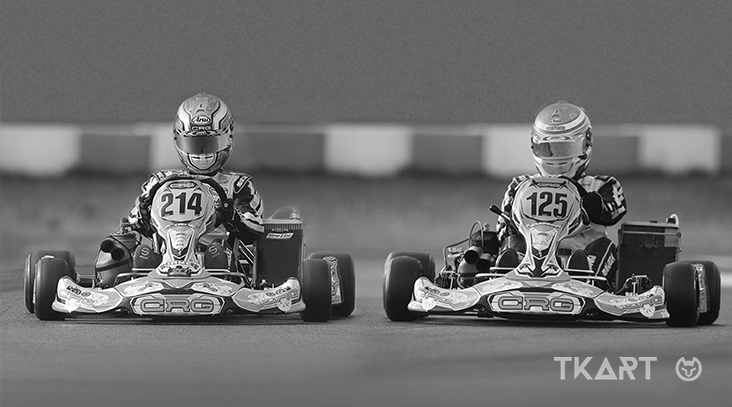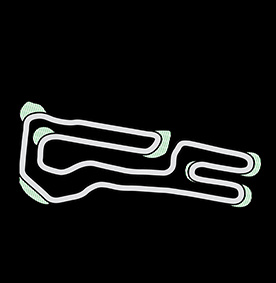SET-UP
The kart equipped with the OK engine shall never focus 100% on a set-up with maximum grip, because it will always be necessary to avoid the kart “sticking” to the tarmac too much and thus avoid potential loss of acceleration, especially when exiting bends. Therefore, if on the one hand with the OK it is necessary to maintain a high speed, on the other hand the set-up needs to be light, to reduce the absorption of power by the wheels when they come into contact with the tarmac.
The KZ, however, needs to be able to transfer all its torque to the tarmac, so it’s set-up will have greater grip, but it will also “stick” more to the track. However, the latter aspect will not result in heavy losses of time thanks to the impressive thrust of the gears.
TRAJECTORIES
Generally speaking, the trajectories of non-shifter karts are wider than those of KZs. The reason? The karts slide far more and high cornering speeds need to be maintained. The latter are also essential to facilitate exiting bends, moments in which the absence of gears means that the rpm must never be allowed to fall too low, otherwise the slower engine speed would mean that the torque is not sufficient for the kart to exit bends quickly, resulting in heavy losses of time.
Obviously, having just the rear braking system reduces the ability to brake of the OK, which by contrast is more effective on the KZ.
OK AND KZ ENGINES
The new OK engines have the advantage of a newfound simplicity of construction compared to the “old” KFs. Indeed, the electric starter, consisting of a battery, starter motor and wiring has been eliminated, as has the clutch and the internal water pump. Consequently, the way the engine works has changed dramatically, especially due to the absence of a clutch and, therefore, the so-called direct drive. Another difference compared with the KF, and the KZ, is the elimination of the front brake. The vehicle loses about 7-8 Kg but, according to the regulations, the minimum weight decreases much more, to 145 Kg, which is some 15 Kg less than the 160 Kg KF. Thanks to these new parameters, the OK’s lap times are remarkably close to those of the KZ.
 Exclusive Content
Exclusive Content



